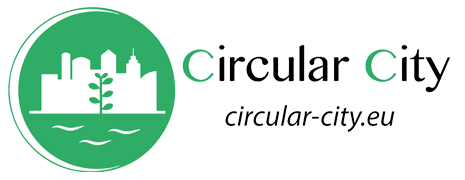The role of NBS in urban planning

As a result of the severe consequences of climate change, urban governments are challenged to deal with a vast array of emergency phenomena, ranging from urban heat islands, flooding, and treatment of waste-runoff waters to food provision and distribution. The Short-Term Scientific Mission (CA17133) by Federico Cuomo aims at exploring how city councils and municipalities across Europe are introducing Nature Based Solutions (NBSs) in urban planning policies. NBSs are considered natural processes capable of producing essential ecosystem services for tackling climate change on an urban scale. To this extent, we take into account NBSs operating in five main areas: water management, resource recovery, urban gardening, built environment and climate change mitigation. Specifically, our research aims to investigate how the Budapest City Council is attempting to introduce NBSs in urban planning policies, analysing the main problems, barriers, enablers to find out potential solutions suggested by public officials, practitioners and experts directly involved in this promising field of policy. Preliminary results point out that four main policy actions could expand and improve the implementation of NBSs in Budapest urban planning: unleashing the creativity of grassroots, increasing coordination between City Council and municipalities; improving managerial and advocacy capacities of practitioners, and strengthening the dialogue between local stakeholders. The STSM delivered preliminary results that help to understand how the Budapest local government is promoting the use of NBSs in its urban planning strategies. In addition, the work provided an open coded research framework useful for comparing qualitative case studies on NBSs. The data collected may be particularly promising for the working group on urban farming (WG4) but also for the working group focused on sustainable urban water utilisation (WG2)
Click to view report
Feasibility study on the addition of specific plastic products to the existing deposit system allowing for “closed loop” solutions
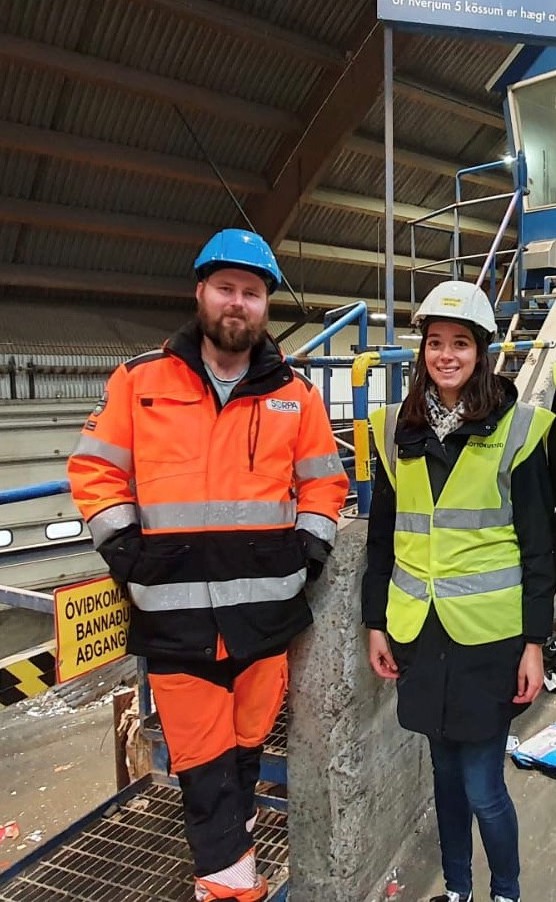
The aim of the STSM by Ines Traxler was to investigate the feasibility of expanding the existing deposit system in Iceland by specific packaging products like yoghurt cups. Therefore, nine semi-structured interviews were conducted within the one month stay in Reykjavik to discuss the Icelandic recycling system. As interview partners various representatives of waste management companies, recycling companies, NGOs and the city council were chosen. The feasibility to expand the deposit system is quite good, however there are several other insufficiencies in the Icelandic recycling system which should be remedied first. To reach the recycling goal of the European Union by 2025 a combination of improving the sorting and collection system in the municipalities and expanding the deposit system are the key factors.
Potential analysis of plastics recycling in Iceland according to EU goals: Analysis of polymer waste streams for mechanical recycling allowing for high-quality recyclates
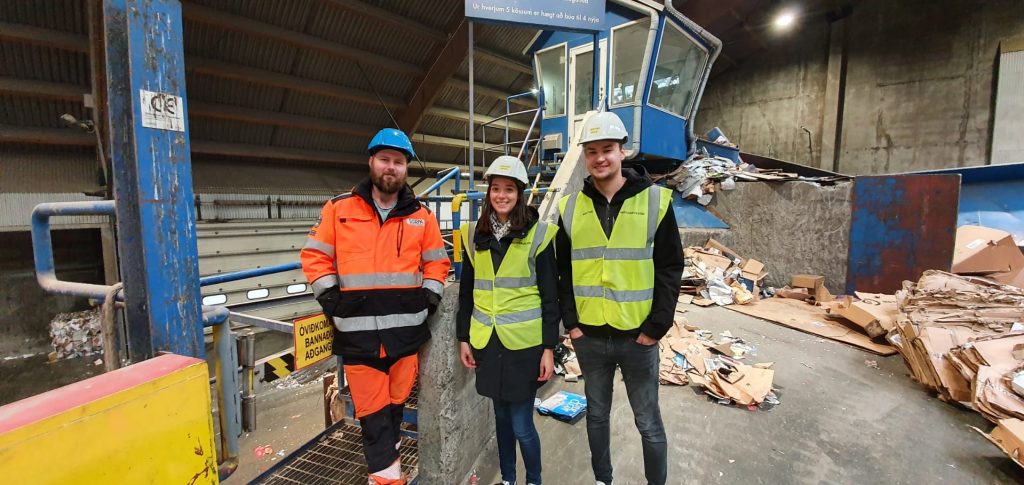
The European Union has declared its targets for packaging waste recycling rates, which are at 50 % in 2025 and 55 % in 2030. Due to close relations between Iceland and the European Union, these targets are equally applied to Iceland, necessitating significant improvements in the recycling value chain. Based on stakeholder interviews, the plastics value chain was analyzed to assess the current state and to identify future possibilities for improved recycling. An extended producer’s responsibility scheme is implemented by the Icelandic recycling fund, which collects taxes for imported products and gives an incentive for the export of waste. By European direction, the recyclability will be taken into account by 2023, resulting in increased taxes for non-recyclable packaging and vice versa. While most of the waste management companies export the collected waste for sorting and recycling abroad, one company conducts domestic recycling of agricultural film and rigid plastics. According to this company, increased domestic recycling necessitates improvements in sorting and collection of waste for clean plastics waste streams. Currently, the collection rate lies at 28 %, which must be improved to 50 % by 2025. Here, the households play a key role, as the separation of plastics into a recycling bin is yet to be implemented at each household. This could also be enforced by laws and regulations, which would fit to the current political direction of the left-green government.
Nature-based solutions for circular cities, Vienna

Dr. Eriona Canga from Polis University (AL) performed a STSM at Alchemia-nova (Austria) for two months. The aim of this STSM was to explore and understand how the city of Vienna is adapting nature-based solutions in relation to five topics: water management, urban farming, build environment, resource recovery, and climate change mitigation and adaptation. These topics reflect the environmental problems of (flooding, urban heat islands, treatment of waste and runoff waters from different origins and food provision) that the contemporary urban planning has to respond at the same time.
The methodology followed was by conducting semi-structured interviews with five different target groups: city council of Vienna, Urban planners and architects, citizen representatives, NGO, private sector entrepreneurs.
The research showed that the nature-based solutions in Vienna are being increasingly implemented. Examples include: Urban gardening, flood management (Danube Island), Swales and drain gardens for urban runoffs, green roofs and green walls, green paths, resource recovery and reuse, efficient public transport which aims to reduce car use and emissions. These initiatives are supported by existing or new regulations, guidelines and tools (Urban Strategy Plan, Urban Heat Island strategy, Waste management standards, Rules for green buildings, Green Pass, Microclimate modeling tool). However, some obstacles preventing the implementation of NBS were also identified, such as costs, maintenance, lack of stronger laws and regulations, traditional architecture, indicate a potential of growth. This STSM was a great opportunity for collaboration with Alchemia-nova, interviewees, and the other STSMs fellows performing the same parallel research on the topic in other European cities which will result in a comparative publication.
The role of NBS in urban planning – A case study for Novi Sad (Serbia)
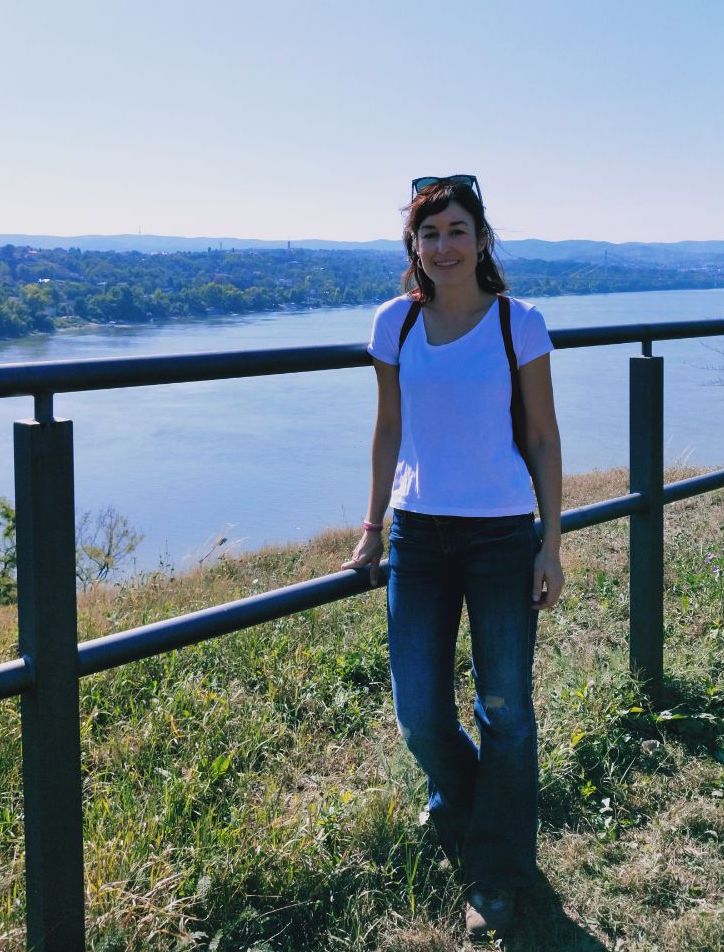
María Viota from the University of the Basque Country in Spain spent one month at the University of Novi Sad (Novi Sad, Serbia) and had the opportunity to participate in multidisciplinary research aiming at understanding how the tools and methods of nature-based solutions (NBS) as well as the elements of circular economy are applied in the urban context to face current challenges such as phenomena like urban heat island effect, flooding or the built environment.
During the STSM, she could explore the factors influencing urban planning and city council policies for the city of Novi Sad in order to contribute to the formulation of recommendations to introduce NBS at the local level.
She could gain knowledge on how nature is brought into the city to better understand the potentiality and extract information that might guide sustainable urban planning. Her field work also involved the opportunity to on-ground visit the practice of NBS in Novi Sad.
Thanks to this STSM, María Viota was introduced to new research methodology of exploratory case study which involved both qualitative and quantitative methods. The interdisciplinarity of the research and Action platform has also contributed to learn in the interface among science, policy and society which is very much of her interest.
In addition, this collaboration helped her to design her research plan and brought ideas for future collaboration with Dr. Dragan Milosević from University of Novi Sad whose work is very much of interest for the grantee and potentially with other members of the Action in line with the idea of the nature contributions to people and the NBS.
The role of NBS in urban planning: Feasibility study of sludge treatment reed bed (STRB) in Sub-Polar climate condition
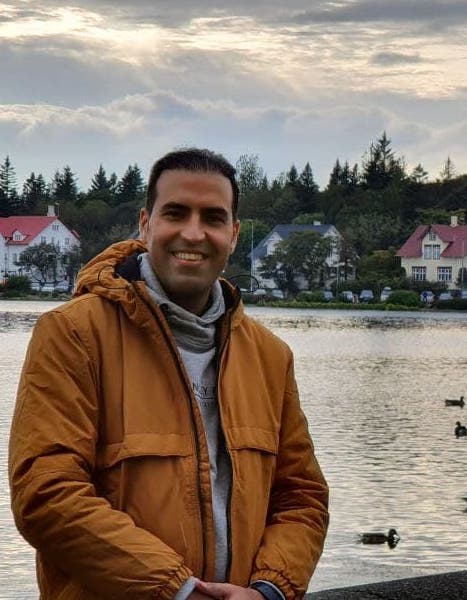
Amir Gholipour from Agricultural Institute of University of Lisbon in Portugal spent one month at Reykjavik University in Iceland. During his visit, Amir explored the factors influencing the decisions in urban planning and city council policies, in order to better understand the implementation and/or the non-adoption of NBS in urban planning. For this purpose, he conducted literature research and semi-structured interview with relevant stakeholders. The literature review yielded a wide range of information and data about wastewater management of Reykjavik and it showed how Nature Based Solutions (NBS) in a sub-polar climate can be applied in order to treat sewage. In particular, the feasibility of Sludge Treatment Reed Bed (STRB) were investigated to dewater sewage sludge in Iceland climate. Eleven interviews with the most relevant stakeholders regarding wastewater management were conducted. The stakeholder included state employees, politicians, decision makers, private companies, NGOs, academics, and local interest groups. Based on the interviews, it is concluded that conventional dewatering systems for sewage sludge are not sustainable and compatible with climate transition and urban challenges. Furthermore, the results reveal that alternative solutions, for example STRB or other green infrastructure can substitute the existing grey infrastructures. The study concludes that the challenges and opportunities of NBS have a tremendous potential and present a valuable alternative to current practices of sewage sludge dewatering in urban area in sub-polar climate. The aim of the Working Group (WG3) is to implement NBS for resource recovery in cities. In this regard, the present STSM through semi-structured interviews showed how an alternative solution like Sludge Treatment Reed Bed (STRB) can be sustainably used in Reykjavik urban environment, in particular to dewater sewage sludge of the wastewater treatment plants and to recover the resources embedded in the dewatered by-product (bio-solids). Overall, it can be concluded that the challenges and opportunities of the STRB implementation in the sub-polar climate of Iceland are tremendous and present a valuable alternative to present practices.
Examining the sorption and metabolization potential of phosphorous and nitrogen from brackish open water bodies with nature-based solutions

Ece Kendir Çakmak is a visiting postdoctoral researcher at KTH (Sweden) and works as a teaching assistant at Hacettepe University (Turkey). She performed a STSM at alchemia-nova (Austria) for two months. The aim of the STSM was to investigate nutrient removal of eutrophic brackish water (Baltic Sea) using lab-scale systems mimicking conditions in the envisioned vertECO© raft nature-based technology and to investigate possible phosphorus utilization pathways theoretically. During STSM, 7 lab-scale vertECO© raft systems were constructed in total including substrate mixture (zeolite, pumice, and biochar) and two different plants (Schoenoplectus tabernaemontani and Bolboschoenus maritimus) to run triplicates and a control system with substrate mixture only. The systems were tested in terms of nutrient uptake capacity by introducing eutrophic brackish water (Baltic Sea) for 9 days after construction and adaptation stage. The results of the experiment showed that average NH4+ and PO43- removal was 91.6-98.6% and 35.9-54.6%, respectively for the treatment with plants. Bolboschoenus maritimus showed better performance than Schoenoplectus tabernaemontani and the control system in terms of nutrient uptake. However, plant uptake with respect to substrate uptake was comparatively low.
This STSM was a great opportunity for her to have an experience on nature-based systems and have a different perspective on eutrophic water treatment. This STSM also helped the involving institutions to initiate future collaborations including improvement of the current vertECO© raft system design and commercialization, as well as development of the research papers and proposing new research projects.
Nature based solutions (NBS) can provide a sustainable approach for management of eutrophic waters by integrating treatment and recovery in an eco-friendly way. This STSM was very promising for this research field and very beneficial for the action and the WG 3 in terms of testing a NBS for mitigation of eutrophic water and possibility of recovering nutrients.
Application of probiotics for improving the circularity of aquaponic food production

Leonardo Bruni from the University of Florence in Italy spent two months at the School of Life Sciences and Facility Management of the Zurich University of Applied Sciences in Switzerland and had the opportunity to be introduced to a new research area. He was trained in hydroponics and aquaponics and performed an experiment on the influence of probiotics on nutrient use, crop quantity and quality in hydroponics- and aquaponics-grown lettuce. The experiment questioned whether the addition of commercial probiotics developed for the soil-bound production or bacterial communities from sludge support the growth of lettuce in soilless systems and whether water origin (aquaculture effluent or hydroponic) play a role in fighting against the pathogen lettuce pathogen Pythium. By completing the STSM he acquired insights into the current developments towards a circular economy. The collaboration helped him to structure his work and the two partner institutions will continue collaborating.
Examining the potential of 3D printing of hemp-based biocomposite building materials as a nature-based solution for circular economy in cities

This STSM by Yaakov Florentin aimed at evaluating the potential of 3D printing of environmentally friendly and carbon negative hemp-clay biocomposite building material using agricultural waste of hemp cultivation and implementing it in the building’s envelope. This was done using the WASP clay printer at the alchemia-nova institute in Vienna, Austria. This solution is a nature-based solution for the built environment, perfectly applicable in cities (WG1 of the COST Action 17133 about Circular Cities). The lab work consisted of examining printed and handmade samples of varying hemp-to-clay mass ratios in terms of printing quality and thermal, physical and mechanical properties. The study concluded that the highest ratio of hemp in the clay mix which could still be streamed through the extruder reached ratio of 10% by mass of the total sample, while a common wall mix of hempcrete reaches 33% by mass. Moreover, 3D printing of hemp-clay biocomposite is certainly possible, but applicable only if using a suitable printer which can properly stream larger aggregates and accommodate various binders such as lime. As of the submission of this report, the shipment of samples has just successfully arrived in Israel. Thermal, physical and mechanical measurements will be conducted on these samples, and the report will subsequently be updated with the rest of the results. This STSM was inherently interdisciplinary, combining diverse fields of knowledge in pursuit of the COST Action aims of promoting a circular economy in cities through nature-based solutions. Both 3D printing of building materials and hemp-based biocomposites are gaining popularity and advancing to large scale construction, thus we propose future collaboration and research using suitable printer to verify our results.
Development of new construction material utilising Air Pollution Control Residue
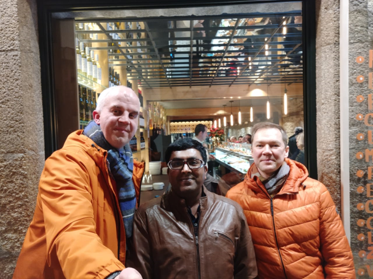
Gaurav Goel from Cranfield University (UK) performed a STSM at the Rudolfs Cimdins Riga Biomaterials Innovations and Development Centre of the Riga Technical University (Latvia). The aim of this STSM was to explore utilisation of Air Pollution Control Residue (APCr) in development of new construction material thus moving towards circular economy. The expected impact of sustainable production of such novel construction material is threefold: (i) reduced exploitation of natural resources (in this case clay), (ii) avoiding the problem APCr disposal and (iii) recycling of APCr as a secondary source for an environmentally-friendly material production. Measurement of engineering and physical properties of these ceramics was conducted as these are critical parameter. These bricks/tiles/ceramics offer several advantages as they will be light weight thus reducing their carbon footprints during transportation. The developed ceramics offer a solution on APCr disposal problems and reduce the consumption of clay thus offering a promising solution towards sustainable production of construction material.
Towards a sustainable urban stormwater management: modelling Low Impact Development (LID) systems at large-scale
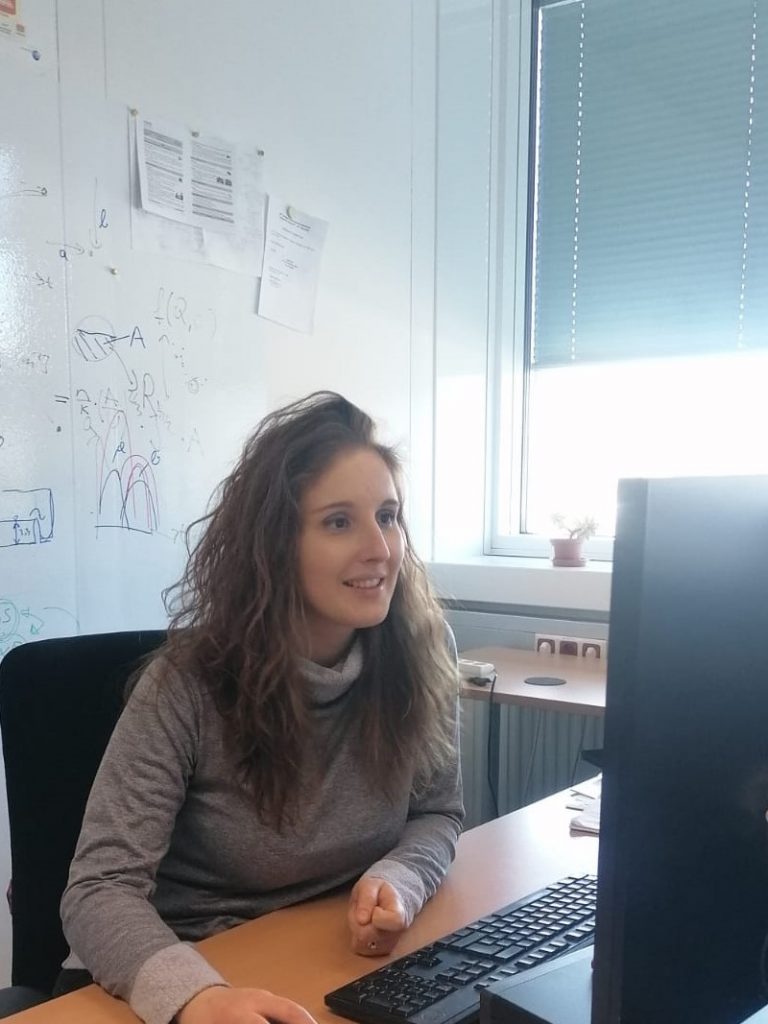
Stefania Anna Palermo from the Department of Civil Engineering at University of Calabria has spent one month at the Department of Infrastructure Engineering at University of Innsbruck (Austria). The aim of the STSM was to apply different Real Time Control (RTC) optimization strategies to Nature-Based solutions (NBS). Thus first the model of an experimental extensive GR, located at University of Calabria, was developed by using PCSWMM and calibrated; then this model was considered to be optimized in RTC from the building scale to the large-urban scale by using PySWMM. At building scale, the RTC strategies were finalized to achieve runoff reduction and drinking water saving. At large scale, the RTC control strategy was applied at the urban catchment of Cosenza in south Italy, providing to: automatically implement different percentage of the GRs and classified them into different control groups, open and closes the drain valves based on the current filling level of the sewer system. The main results showed: (i) the good accuracy of the developed GR model; (ii) a runoff reduction at building scale of 69%, obtained by the RTC of the only GR, and of 88% in case of smart combination of GR and Rainwater Harvesting system, as well as, in this last case, a drinking water saving of 22.2%; (iii) the high hydrological efficiency of controlled GRs at subcatchment scale than the conventional ones. Finally, this work represents an advanced way to consider NBS, on example of as green roofs, and can support the spread of these solution at large scale. The period spent at the Department of Infrastructure Engineering at University of Innsbruck (Austria) opened up the possibility of future collaborations in this innovative field.
Circular-oriented use of building products in the planning process of a pilot project
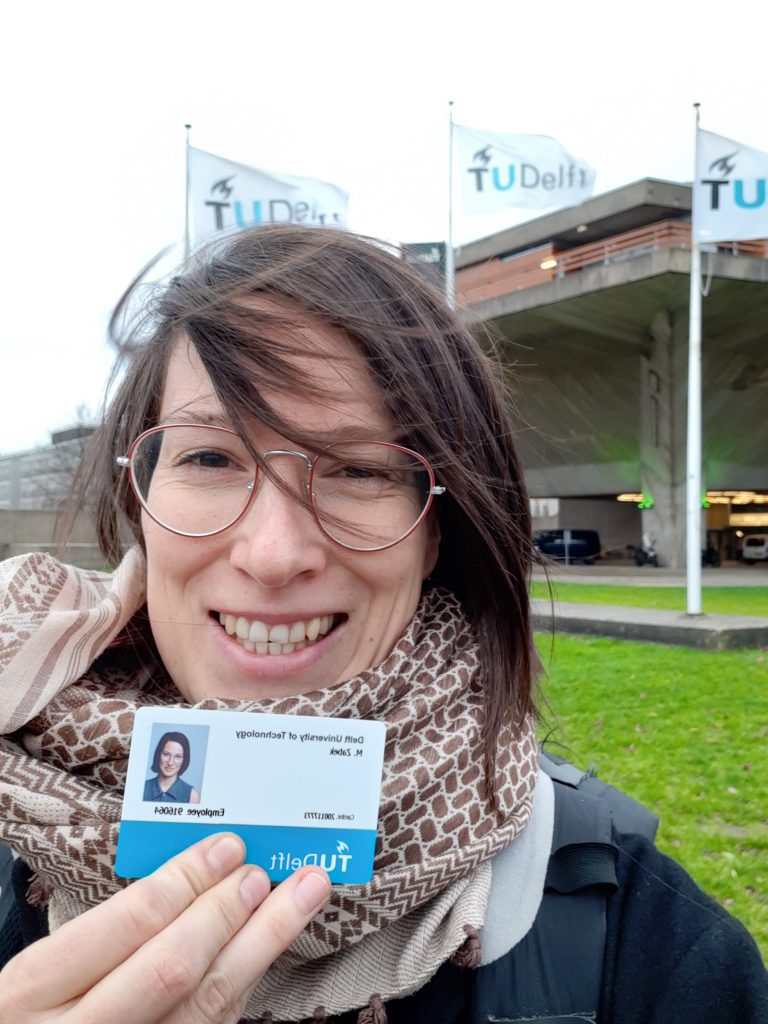
By completing the STSM of the COST action CA17133 Magdalena Zabek got the opportunity to link my PhD thesis entitled ‘Circular-oriented use of mineral building products in the planning process of residential buildings’ to the work of international researchers at the Department of Architectural Engineering and Technology at the Delft University of Technology. Joining active networks give me an insight into current developments in The Netherlands towards a circular economy. The collaboration helped me to structure my work and discuss assessment methods of circularity and methods to model circular planning processes. Furthermore, I completed my preliminary investigation of circular buildings and developed new strategies to continue with my research about circular process modelling.
Cultivation of microalgae for functional food ingredients

Dr.-Ing. Mehmet Ali Küçüker works as an Assistant Professor at Çanakkale Onsekiz Mart University, Department of Environmental Engineering, in Turkey. He conducted his STSM at Hamburg University of Technology (TUHH) in Germany. TUHH provides research and education activities on microalgal products and technologies for food, pharmaceutical, energy and environment sectors. The goal of this STSM is for Dr. Küçüker, is to gain first-hand experience on the cultivation of microalgae that contain large amounts of structural biopolymers, including lutein, proteins and carbohydrates and its specific process for the obtaining functional food ingredients. The specific tasks of this STSM are listed as follows: Training for cultivation of the microalgae with high rate of cultivation efficiency in the photobioreactors (PBRs) and extraction of functional food ingredients from cultivated microalgae. The studies carried out on the contents and concentrations of the microalgae C. sorokiniana allow the following conclusions: The examination of the primary cell components has shown that these are not significantly influenced by external factors or by the type of culture medium. A concentration of about 410 g kg-1 for proteins, 305 g kg-1 for saccharides, 130 g kg-1 for lipids and 52 g kg-1 for pigments was found as the mean value. The average concentration of lutein was about 2.8 g kg-1.
NBS in city policies: mapping the terrain
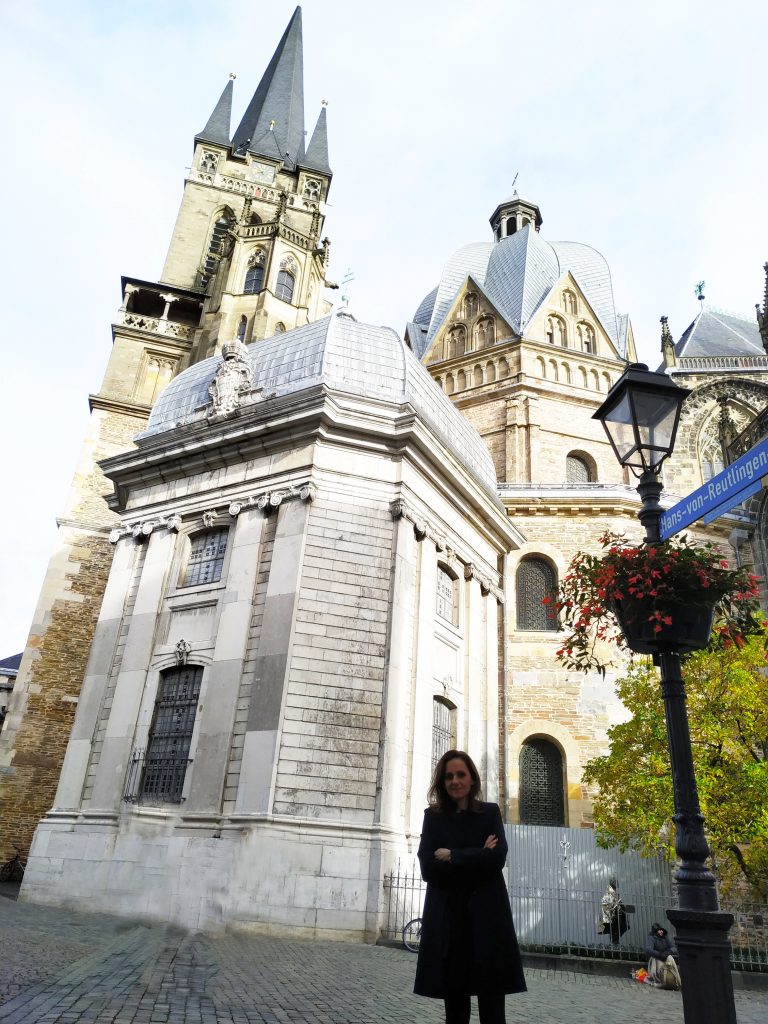
The purpose of the STSM was to evaluate the City policies of representative cities in regard nature-based solutions (NBS), and EU policies and framework related to NBS, to underpin better implementation and mainstream NBS in cities, and foster sustainability urban planning in cities. MSc Arch. Mari Carmen Garcia Mateo has conducted research under the STSM: NBS in city policies: mapping the terrain, during six weeks under the framework of the COST Action 17133. How can city policies facilitate the implementation of Nature-based Solutions in urban settlement enhancing circular economy and foster coping with future challenges? The aim of this STSM was to analyse the state of the art and investigate novel possibilities for NBS implementation in the urban landscape, identify governance, financial and legal barriers for NBS implementation.The analysis showed that more ambitious policies must be set. Strategies and Action Plans should be created and implemented for sustainable urban planning in cities trough Nature Based Solutions, enhancing the new EU Green Deal that is under development .Overall, to strength the potential of NBS as a framework for tackling environmental, social and economic challenges, a more innovative, coherent, holistic and bold approach should be achieved at the city level to reconnecting people and nature again.This STSM also strengthened the collaboration between the researcher MSc Arch. Mari Carmen Garcia Mateo organization-MCG Research & Innovation Sustainability Architecture /Urban Planning, and the host RWTH Aachen University, Institute of Landscape Architecture, and create a joint knowledge approach.
Exploring the capabilities of microalgae water treatment for the elimination of hazardous pollutants in produced water from oil and gas extraction processes
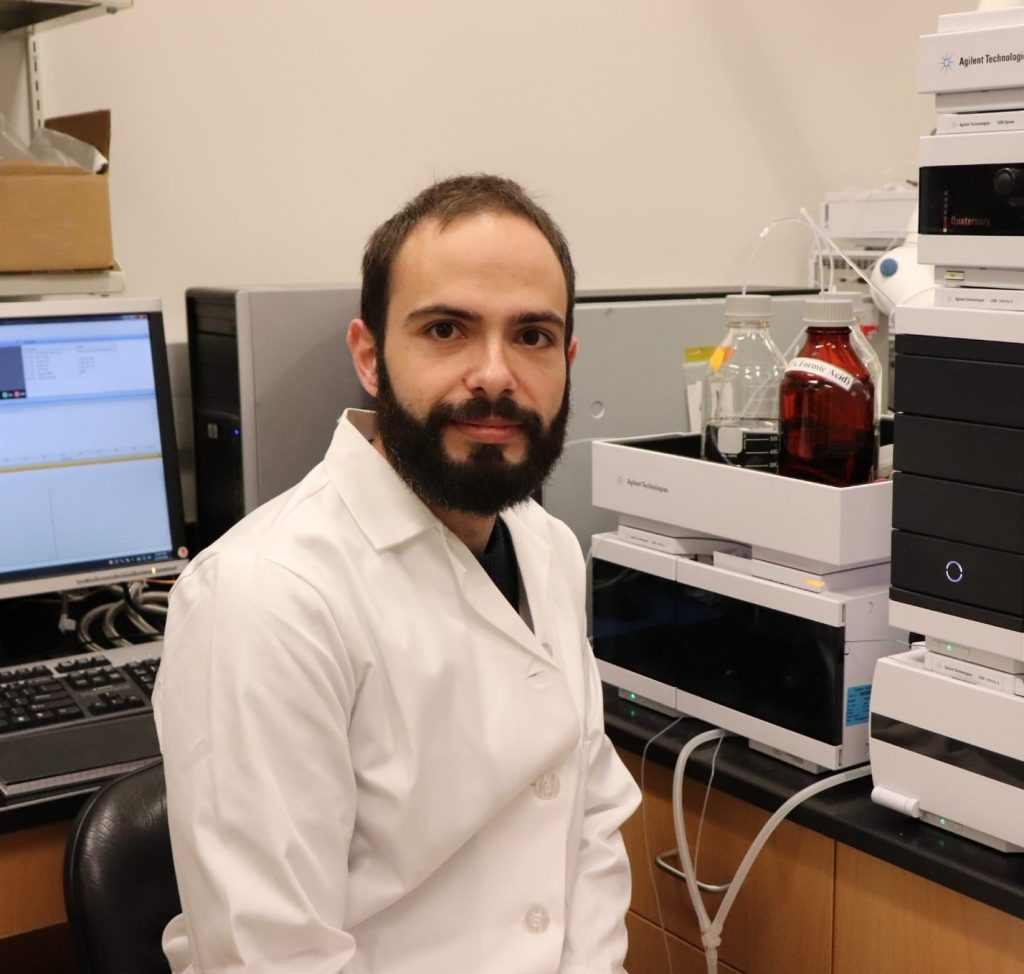
Adrián Jaén-Gil from the Catalan Institute for Water Research (ICRA) in Spain spent three months at the Norwegian Institute for Water Research (NIVA) in collaboration with the Institute for Energy Technology (IFE) in Norway to study the capabilities of microalgae water treatment for the elimination of the hazardous pollutants in the produced water generated from oil and gas extraction processes. The implementation of these cost-effective and environmental-friendly treatment solutions are crucial to ensure a safe water discharge into the environment and promote produced water as a valuable resource in regions affected by water scarcity. Thanks to this STSM, Adrián Jaén-Gil had the opportunity to be introduced into a new set of research clusters and collaborate in the development of new nature-based solutions (NBS) to encourage a Green Circular Economy. The three institutions involved will maintain a collaboration to continue exploring these sustainable resources.
Circular solutions in Reykjavik

Dr. Tamara Llano Astuy of the University of Cantabria, assistant professor at the Department of Chemistry and Process and Resources Engineering, has been working at the University of Reyjkavik for 90 days under the framework of the 2nd call STSM of the CA17133. She has been collaborating with Dr. David C. Finger and with the SORPA landfill to take the data of waste management in Reykjavik capital area. During the 3-months internship, Dr. Llano developed several models in Aspen Plus to simulate under different process conditions. Several configurations of anaerobic digestion were simulated under different temperature regimes, testing two kind of reactors, using one or two consecutive reactions steps, operating with different waste fractions (lignocellulosic biomass, food waste, municipal solid waste or co-digestion of two most generated fractions in Reykjavik). Several technical, environmental and economic indicators were compared and analyzed in all simulated scenarios: yield of methane, the amount and composition of the digestate (solid residue), purity of biogas, total released CO2, capital and operating costs. Thanks to this collaboration, both institutions will maintain a good and prolific relationship for the next years through exchange students, R&D projects in consortium and scientific manuscripts. Other results of this collaboration were the development of a manuscript that will be sent in November, and the presentation of an oral communication at TERRA en VISION Congress held in Barcelona (Spain).
Rethinking nature based solutions for creating really sustainable green infrastructures – Potential of natural and recycled green roof materials to improve their ecological footprint
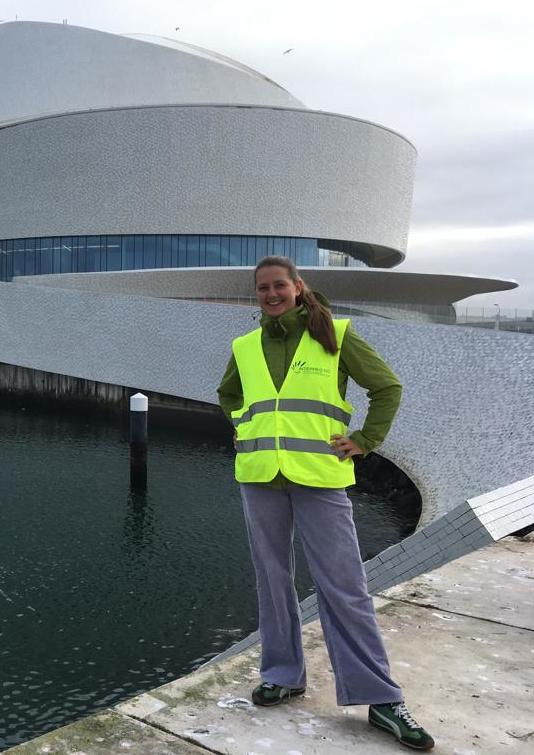
Laura Tams from Technische Universität Berlin (Germany) performed a STSM at the CIIMAR- Interdisciplinary Centre of Marine and Environmental Research of the University of Porto with host Cristina Calheiros to evaluate the potential of natural and recycled materials for green roof systems with the LCA method. The analysis focused on alternatives for the conventional substrate and drainage layer. Three scenarios were evaluated: 1. Conventional layers and substrate 2. Cork implemented as a drainage layer and technical substrate 3. Cork implemented as drainage layer and an alternative soil-like substrate. The usage stage was not implemented as there are to many different options to just force on one. The demolition stage was not implemented as well due to the lack of data. The results of the LCA show that cork has a negative global warming potential of -15.9 kgCO2/m² green roof compared to the synthetic alternatives. Furthermore, it is evident that when substituting the conventionally used expanded clay substrate with its high energy demand in manufacturing by using sand or recycled brick, it has a great potential to reduce the CO2 emissions further. The results show that for creating really sustainable nature based solutions towards a circular city, recycled and natural products play a key role. For the implementation of green roofs local and recyclable resources should seriously be considered.

Modelling of hydrological processes of a green roof
The aim of the STSM by Michele Turco was to develop a simple methodology to combine physically-based model at building scale with an urban scale model for the analysis of the hydrological behavior of a green roof. In this way, I applied the HYDRUS-1D model to simulate water flow through the green roof layers at building scale and then combining results from the Hydrus simulations with EPA SWMM model at urban scale. Results from simulations showed that the possibility to connect and combine these two kind of models is possible.Thus, the accurancy of the results in terms of volume reduction and flooding event reduction has been increased by using this methodology.
Fundamentals of NBS circularity performance evaluation and its application to Watch List 2018/840 micropollutants
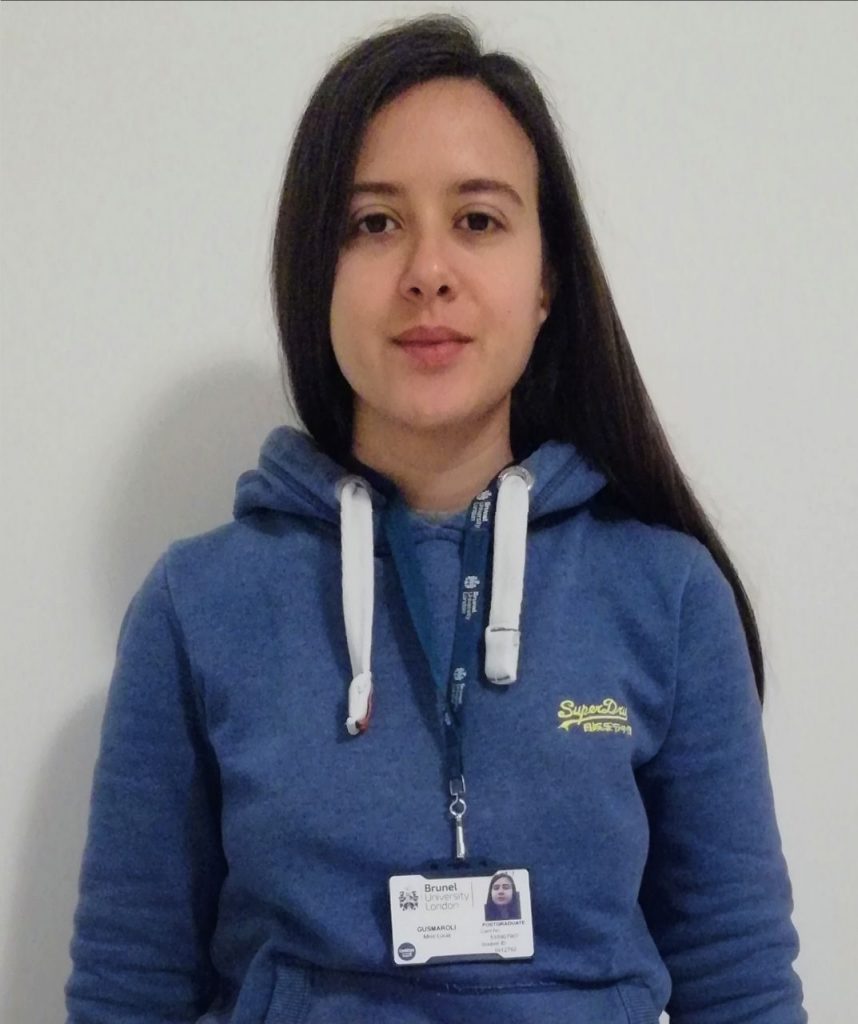
During my STSM at Brunel University, Lucia Gusmaroli had the opportunity to be introduced to a new research area. Liaising with the hosting research group, I learnt about nature-based solutions (NBS) and their link with circular economy. Since I work in the field of contaminants of emerging concern (CECs), I was able give my contribution on the issue of CECs in NBS, focusing on legislation and identifying both research and policy gaps.
A step towards creating a resourceful circular city in context of producing city food
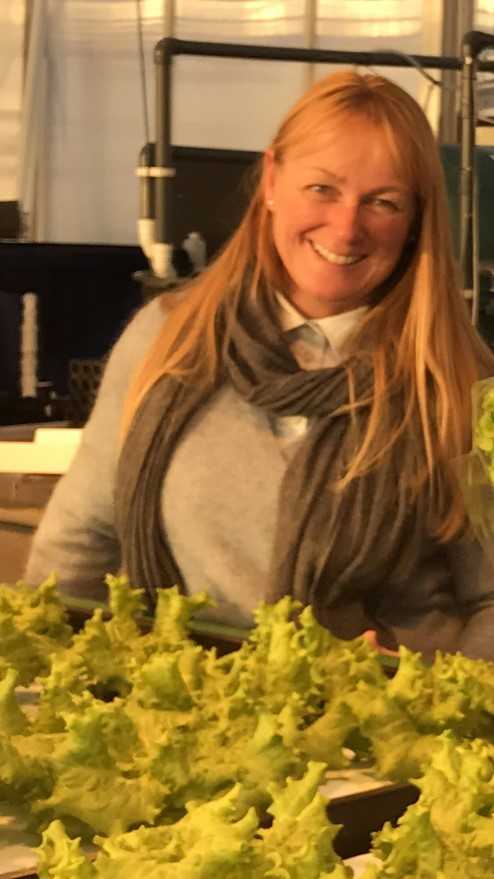
Siv Lene Gangenes Skar (Norwegian Institute of Bioeconomy Research, NO) spent a month at the Agricultural University of Iceland (AUI) to foster collaboration and learning more of developing innovative future systems, researching how circular food production could be combined with tourism and geothermal energy, visiting and learning about AUI facilities, for future collaboration. This STSM made it possible for Cand. Agric. Skar to develop a plan of starting her PhD study. The university has innovative and well educated staff, willing to be in a team developing circular innovative future food systems. While visiting the places, research questions and possible project collaboration were discussed with researchers at the university. For more information on this research contact Siv Lene.
